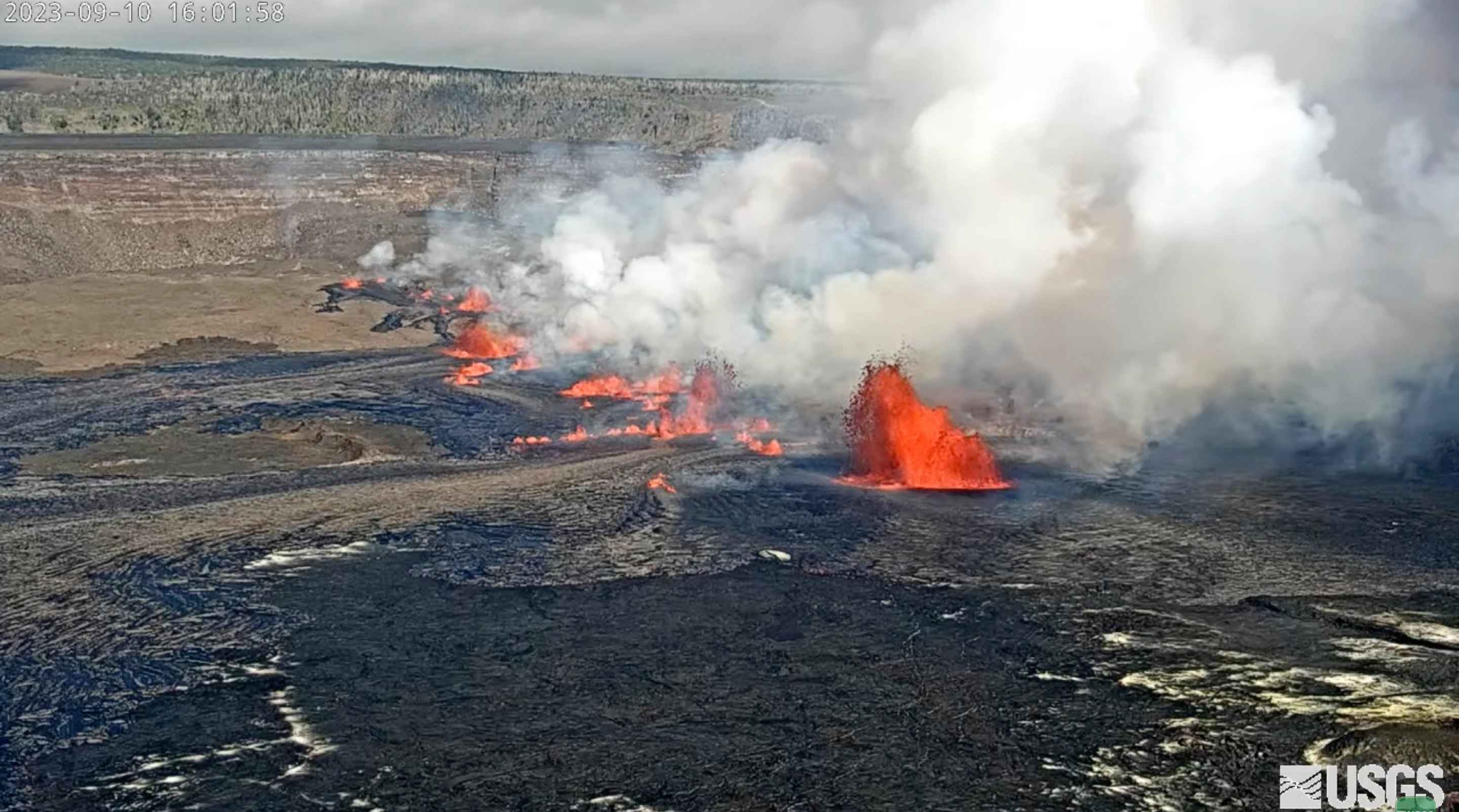Hawaii health officials warn volcanic smog known as vog has returned during latest eruption
Health officials are warning the public about air-quality hazards from the latest eruption of a Hawaii volcano

The latest eruption of a Hawaii volcano isn't threatening any infrastructure but health officials are warning the public about air-quality hazards from volcanic smog known as vog.
Kilauea, one of the most active volcanoes in the world, began erupting Sunday. On Monday, scientists downgraded its alert level, saying there was no threat of significant ash emission into the atmosphere outside a limited area within Hawaii Volcanoes National Park.
Later Monday, state health officials said the eruption brought vog to some parts of the Big Island, causing poor air quality.
Volcanic smog, or air pollution, is created by vapor, carbon dioxide and sulfur dioxide gas released from Kilauea.
The gases are present in their highest concentrations in the immediate area around the summit crater or vents. But they also combine with other particles to form vog, which can spread across the Big Island and even waft over to the state’s other islands.
Vog can give healthy people burning eyes, headaches and sore throats. It can send those with asthma or other respiratory problems to the hospital.
The health department's air quality map Tuesday showed Pahala, downwind of Kilauea's summit, as “unhealthy for sensitive groups.”
Big Island Mayor Mitch Roth was driving to that part of the island Tuesday morning for a series of meetings. Residents in Kau, the island's southern district, are used to dealing with vog, Roth said, but reminded visitors, especially those with breathing issues, to be mindful.
“The vog a lot of the time will go around Kau and come up to the Kona side,” he said.
Bookmark popover
Removed from bookmarks